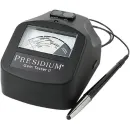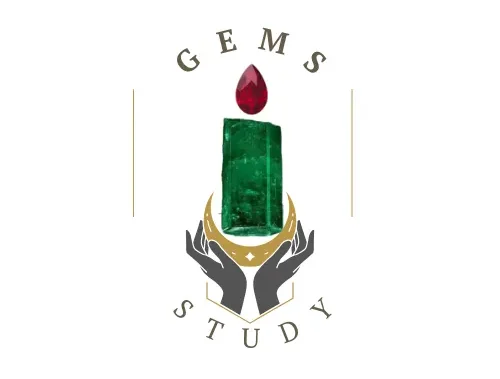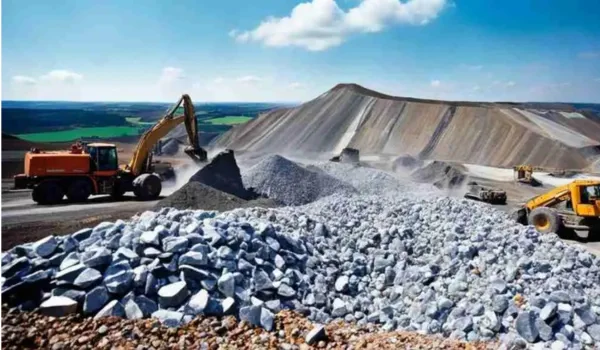Gemstone mining is a complex and laborious process that requires the use of specialized tools and equipment. Over the centuries, the methods and tools used in gemstone mining have evolved from simple hand tools to sophisticated machinery. This blog will explore the different tools used in gemstone mining, their specific uses and the skill required to use them. In addition, we will look at some of the traditional tools and methods that were used in ancient times to extract precious stones.
Table: Types of Gemstone Mining Tools, Their Uses, and Expertise Required
| Tool Name | Primary Use | Expertise Required |
| Pneumatic Drills | Breaking through hard rock to access gemstones | High |
| Rock Hammers | Manual extraction of gemstones from rocks | Medium |
| Sluice Boxes | Separating gemstones from sediment in riverbeds | Low |
| Screening Sieves | Sorting and grading gemstones from debris | Low |
| Jackhammers | Breaking large rocks and boulders | High |
| Bulldozers | Removing topsoil and debris to reach gem layers | High |
| Hydraulic Mining Tools | Washing away sediment to reveal gemstones | Medium to High |
| Pickaxes | Manual digging in smaller-scale mining | Medium |
| UV Lamps | Identifying gemstones that fluoresce under UV light | Low |
| Gemstone Testing Kits | Verifying the quality and authenticity of gemstones | Medium |
Description of gemstone mining equipment
Pneumatic Drills (gem mining equipment)

Pneumatic drills play a crucial role in gem mining, particularly in challenging mining conditions where it’s necessary to penetrate strong granite. These robust tools enable miners to access deeply hidden gemstones by breaking through solid layers of rock. Pneumatic drills require a high level of expertise due to their accuracy and power requirements. They are particularly valuable in underground mining, where gems such as sapphires and diamonds can be found in difficult formations like basalt or kimberlite.

Rock Hammers (gemstones mining equipment)
Rock hammers continue to be useful in the gemstone mining industry. These tools are especially useful for manual extraction, helping miners to carefully separate gemstones from the adjacent rock. Rock hammers are suitable for both users and small-scale operations, as they are available in a variety of sizes and weights. They are a dependable and simple choice for separating material to reveal hidden gems.
Sluice Boxes (gem mining tools)

Sluice boxes are a crucial part of natural gemstone mining, especially in river areas where sapphiires and garnets are common. This simple and useful tool allows miners to separate gemstones from soil by passing the material through riffles and sieves. Miners trap the heavier gems and clean away the lighter waste. People highly value sluice boxes for their ease of use in identifying river deposits.
Screening Sieves (Mining Tools)

The separation of gemstones from mined material requires the use of screening sieves. The tools categorize gems according to their dimensions using cloth filters of various sizes, ensuring proper grading for further processing or sale. Screening sieves are user-friendly and require minimal expertise, making them accessible to both professional and beginner gem hunters. They are helpful in optimizing the sifting process.
Jackhammers (Mining Tools)

Jackhammers are necessary in the large-scale gem mining industry, as they are required to blast through huge granite formations. Heavy equipment and these powerful tools work together to effectively break through surface layers and access gem deposits. Surface mining operations, where substantial granite volumes require management, particularly benefit from the effectiveness of jackhammers. It is imperative to possess the necessary operational skills and training to operate these instruments in an efficient and secure way.
Bulldozers (Mining Tools)

Bulldozers, a fundamental component of large-scale gem mining, can effectively remove detritus and debris to expose layers full of gemstones. In surface mining conditions, where massive land clearance is necessary, these heavy-duty machines are especially helpful. It is important to possess a high level of skill in the operation of bulldozers, as these machines are necessary for the preparation of mining sites for extraction activities.
Hydraulic (Mining Tools)

Hydraulic mining machines use high-pressure water streams to remove soil and reveal hidden gemstones. This method is particularly useful in areas with loose gravel or sedimentary deposits. Flexible hydraulic systems can extract a variety of gemstones, including emeralds, sapphires, and rubies. With the goal of operating this machinery effectively, workers need to understand the principles of water dynamics and extraction techniques.

Pickaxes
Small-scale and local operations still commonly use pickaxes, making them one of the most traditional instruments/tools in gemstone mining. Pickaxes are highly successful when used well, and they are ideal for breaking gentler granite strata. Given their historical origins, pickaxes remain an effective method for gemstone mining in artisanal locations.
UV Lamps

UV lamps, a useful source, easily identify gemstones that exhibit fluorescence under ultraviolet light. When exposed to UV light, gems such as diamonds, certain sapphires, and fluorite may emit unique glows, which helps their rapid identification. UV lights are a valuable resource for miners doing initial reviews in the field, as they need very little guidance to operate effectively.
Gemstone Testing Kits

Gemstone testing devices are necessary to judge the veracity and quality of newly found gemstones. These kits typically include tools such as refractometers, magnifiers, and hardness detectors, enabling miners to evaluate the essential characteristics of gemstones. To effectively use these kits and ensure the processing or sale of only genuine, high-quality gems, a basic understanding of gemstone properties is necessary.
Old Gem Mining Equipment and Techniques
In the past, gemstone mining was done with much simpler tools and techniques than today. Hand tools such as chisels, hammers and picks were the main Equipment used by the miners. These tools required considerable physical labor and time to extract the precious stones from the rock formations. In alluvial mining, simple buckets were used to separate precious stones from river sediments. The miners collect the sediments from the riverbeds, roll them into a bin, and leave the lighter materials washed away, leaving behind heavier gems like sapphires or garnets.
Ancient mining techniques also involved the use of fire, where miners heated the rock with fire and then poured water over it to crack it. This method was used to drill hard rock and reach deposits of precious stones. Although these traditional methods were effective at the time, they were labor intensive and time consuming, limiting the amount of gemstones that could be mined.
🤔FAQs About Gemstone Mining Tools
Gemstone miners use a variety of tools depending on the scale and type of mining. Common tools include picks, chisels, shovels, hammers, sieves, and headlamps. Advanced operations may use jackhammers, diamond-tipped drills, and even heavy machinery like excavators and bulldozers.
For manual gemstone hunting, a rock hammer combined with a small shovel and a classifier sieve is considered essential. These tools help break apart rock and sift through soil to find rough gemstones near the surface.
Yes, some gemstones like garnets, agates, and quartz can be found in stream beds, riverbanks, or exposed soil without specialized tools. However, having basic gear like a screen, shovel, and water bottle to wash stones can greatly improve your success rate.
In many countries, small-scale or recreational gemstone mining is allowed with proper permits or in designated public mining areas. Always check local mining regulations before starting any digging or collecting activity.
Experienced miners use a combination of color, crystal shape, hardness (Mohs scale), and luster to identify rough gemstones. A portable gem testing kit or smartphone apps can also help in quick on-site identification.
Safety gear is critical. Miners should wear helmets, gloves, safety goggles, and durable boots. In deeper mining environments, respirators and headlamps are also important for protection and visibility.
Metal detectors are not typically effective for non-metallic gemstones like quartz or topaz. However, they can be useful in areas where gemstones are found alongside gold or other metallic minerals.
Gemstones such as amethyst, garnet, sapphire, and turquoise are often accessible enough to be mined using basic hand tools, especially in alluvial deposits or shallow surface areas.
Arguably, the most essential tool is knowledge. Understanding geological formations, rock types, and the natural indicators of gem-bearing areas is key to successful gemstone mining—more than any single piece of equipment.
You can purchase gemstone mining kits and individual tools from rockhound supply stores, online marketplaces like Amazon, or specialized geological equipment suppliers. Always look for high-quality, durable tools designed for field use.
Conclusion
Gem mining has come a long way from its humble beginnings, thanks to modern tools and techniques that greatly improve the efficiency and safety of mining operations. From pneumatic drills and hydraulic mining tools to traditional hammers and picks, the variety of tools available today accommodates different types of gemstone extraction. Understanding the tools and methods used in gem mining is essential for anyone interested in the field, whether they are a professional miner or an amateur gem hunter. The combination of modern technology and traditional techniques continues to shape the gemstone mining industry, ensuring that these gems can be mined and enjoyed for generations to come.

